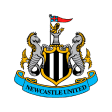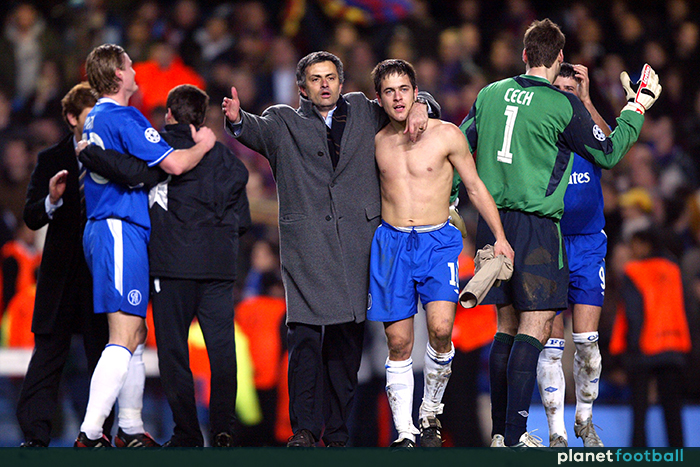A celebration of peak Joe Cole: ‘A special player, full of fantasy’
Every English football fan of a certain age should have a special place in their hearts for Joe Cole. Once upon a time, he was the nation’s greatest hope.
No matter how many people warn against heaping too much pressure on young players’ shoulders, in England we just can’t help it. The country is constantly looking for a new hero.
Even in the digital age of constant hyperbole, however, few players have had to handle the intense fever which surrounded Joe Cole’s embryonic days as a burgeoning professional footballer.
At the age of 15, Cole was earning rave reviews in the national press thanks to his performances for England schoolboys, attracting interest from the likes of Arsenal and Manchester United.
By 17, he was being invited by Kevin Keegan to train with the senior England squad after inspiring West Ham to a 9-0 thrashing of Coventry City over two legs in the final of the FA Youth Cup.
And just to temper expectations, he was one of the first teenagers to be dubbed ‘The Next Gazza‘.
When Cole was paraded at Upton Park during half-time of a league match against Chelsea to sign his first pro contract, the stadium announcer declared: “You can tell your grandchildren you were here when Joe Cole signed.”
Cole’s career since the end of the noughties created the perception that he failed to live up to his immense potential, but that’s unfair. If not necessarily ever the best English footballer, for a period between 2004-09, Cole was undoubtedly one of the most fun. That alone makes him worthy of celebration.
Do what you like, son
One of the things which always made Cole so alluring is that he was so obviously mad about football. He always seemed most at home on the pitch, with the ball at his feet and a defender stood in his way, primed to be embarrassed.
By the time he had broken into West Ham’s first team, Cole was already asking Harry Redknapp if he could avoid giving interviews. The boy from Camden only ever had one thing on his mind: football.
He went on to make 150 appearances for the Hammers and became renowned for his flair and trickery. Those sort of players are few and far between in England, and Cole was a welcome breath of fresh air; a footballer seemingly born to entertain.
As a child he had paid particularly close attention to Italian and African football, making a note of the latest piece of skill and honing it himself at the next available opportunity.
Rather than be overawed by the seriousness of top-flight football, Cole carried the same attitude against his senior pros, with the advice of his coach at Camden and Islington Boys, Terry Howard, ringing in his ears: “Do what you like from now on, son.”
“I’ve been coaching for 20 years and have never seen such a combination of flair, pace and commitment,” Howard said of his first impressions of the youngster in an interview with The Independent in 1999. “He was also the most modest.”
Come 2002-03, and still at the tender age of 21, Cole was made West Ham captain by Glenn Roeder and flourished with the added responsibility.
West Ham may have been unable to avoid relegation, but Cole’s valiant displays in midfield earned him the club’s Player of the Year award and a £6.6million move to Chelsea, where he was labelled the “new Gianfranco Zola” by Claudio Ranieri. The unrelenting expectation continued to increase.
However, handed the No.10 shirt, his debut season with the Blues was somewhat underwhelming. While he made 50 appearances in all competitions, exactly half of those were from the bench, and he did not score in the league until April as he struggled to find a suitable role in the team.
It would be a theme which continued throughout his career. Cole played at a time when English football transitioned from 4-4-2 to 4-3-3, neither formation particularly allowing for the indulgence of a free-spirited No.10.
Guided by Mourinho
It was the arrival of Jose Mourinho at Chelsea which prompted the best football of Cole’s career. If the game was unwilling to adapt to his talents, he could at least adapt himself under the guidance of one of the most tactically astute managers in modern football.
Two things helped Cole rediscover his verve at Chelsea.
First, John Terry, who Cole has described as “like an older brother” at the time, asked one of the video analysts to pull together a compilation of all the midfielder’s highlights to remind him of his unique ability.
But the main turning point came in October 2004. Cole walked off the pitch at Stamford Bridge having scored an excellent winner against Liverpool, only to be publicly criticised by Mourinho for a lack of defensive application.
“He has two faces – one beautiful and one I don’t like,” Mourinho said. “He must keep one and change the other one.”
Rather than take the criticism to heart, Cole had the belief in his own game to go out and prove his manager wrong. After all, even though he was still only 22, it was all part and parcel of being Joe Cole.
“We are on the same page,” he said. “He wants Chelsea to win games and I want Chelsea to win games. He wants Joe Cole to be a better player than he already is – and so do I. I have always taken criticism well and it wasn’t massive criticism in my eyes.
“We both want to make me a better player for Chelsea and if that is the end result then that is all that matters. It hurt when people said I was showing off. All I like to do is put a smile on fans’ faces as part of the side.
“What people must appreciate is I have had this attention since I was 16 at West Ham. The expectancy was enormous then and hasn’t changed.”
From that moment on, Cole established himself as one of Mourinho’s go-to men on the wing, starting the League Cup final victory over Liverpool and both legs of the Champions League semi-final defeat to the same opponents.
He ended the season with nine goals in 46 appearances, with only 12 of those outings coming from the bench. Most importantly, he also had a Premier League winner’s medal.
The following season continued in much the same manner. With the fully-earned trust of Mourinho, Cole went one better in terms of both appearances and goals, despite the added competition from Shaun Wright-Phillips alongside Damien Duff and Arjen Robben.
And at the end of that 2005-06 campaign, Cole produced one of his finest moments in a blue shirt.
With Manchester United arriving at Stamford Bridge in April, Chelsea had the chance to clinch the title against their nearest rivals. Fittingly, it was Cole who produced the piece of skill worthy of winning a championship.
Receiving the ball with his back to goal and three United defenders around him just outside the box, Cole somehow left all three for dead with the deception of the world’s greatest conman before firing the ball home with an emphatic finish.
Joe Cole 🆚 Manchester United
It's Matchday!
Manchester United vs Chelsea FC
Old Trafford
5.30pm (UK Time)#COYB 💙 pic.twitter.com/DYJ0IfjjrZ— ChelseaFC News & Vids (@CFCclips) December 28, 2015
In one moment Cole showed both the absurd talent which first attracted him so much hype at West Ham and the refinement of his game at Chelsea which made him the country’s best attacking midfielder.
Later that summer, Cole also produced the highlight of his England career with his stunning, dipping volley against Sweden at the World Cup.
It was another example of him attempting something most other players wouldn’t even dream of.
“Joe Cole has always been a special player, full of fantasy,” Sven-Goran Eriksson had commented four years previous. Finally, he was proving it on a regular basis.
#OnThisDay in 2006, Joe Cole scored THAT volley from 35 yards out against Sweden. pic.twitter.com/gDHF4keQDd
— Planet Football (@planetfutebol) June 20, 2020
The beginning of the end
In the following three seasons Cole cemented his status as one of English football’s favourite sons, collecting the FA Cup twice, another League Cup and coming a John Terry slip away from winning the Champions League.
But in January 2009, Cole ruptured his anterior cruciate ligament playing in an FA Cup replay at Southend, and his career would never be the same.
Upon his return, nine months later, he never fully established himself in what was then Carlo Ancelotti’s side before his contract expired in the summer.
“Ever since I did my knee at Chelsea, it was an uphill struggle,” he told the Daily Mail in 2017.
Cole’s last appearance for Chelsea came in the FA Cup final victory over Portsmouth which secured the club’s first ever Double, and there were still enough flashes of inspiration – namely his back-heeled opener in a win at Old Trafford – to convince Fabio Capello to name him in England’s squad for the 2010 World Cup.
THE BACKHEEL GOAL 🙈🙉
Joe Cole v Manchester United in PL 2009/10
⚽🎥……pic.twitter.com/rxjDmDGKTc
— CFC SAUDI FANS ™ (@CFCSAUDIFANS) August 6, 2019
It speaks volumes about how he was regarded that Terry tried to lead a mutiny against the manager to ensure Cole was selected after a dismal display against Algeria devoid of any spark.
“Listen, Joe is one of the best players in our country,” he said. “He has come back from an injury and showed great form for Chelsea. It still amazes me how the club have come to the conclusion of letting Joe go.”
But Cole was only granted two substitute appearances, and his club career similarly failed to take-off thereafter.
A move to Liverpool never recovered after a red card on his debut and a missed penalty in his second appearance.
Though he did impress at Lille alongside Dimitri Payet and Eden Hazard – we’re not ashamed to admit that resembles something close to our wet dream – a return to West Ham and short spell at Aston Villa also fell flat.
• • • •
READ: When Joe Cole, Eden Hazard & Dimitri Payet lived out my football wet dream
• • • •
To his credit, Cole continued to battle against his body, and dropped down two divisions to rekindle his love for the game at Coventry City before heading west for an Indian Summer with the Tampa Bay Rowdies.
While many are tempted to label Cole a waste of potential, that would be unfair. He is one of only 11 Englishman to have won three Premier League titles, three FA Cups and played in three World Cups.
“Once you stop learning, there’s no point playing,” he told The Guardian in 2011. “You’d have mastered it. And no one’s mastered football yet.”
Joe Cole shouldn’t be used as a warning to young footballers, he should be used as an example.
By Rob Conlon
READ NEXT: Where are they now? Chelsea’s first starting XI under Roman Abramovich
TRY A QUIZ: Can you name every member of England’s 2006 World Cup squad?

























